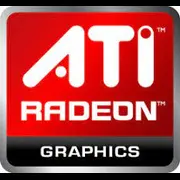ATI Mobility Radeon HD 5870

ATI Mobility Radeon HD 5870: A Retro GPU Analysis for Enthusiasts
April 2025
Introduction
The ATI Mobility Radeon HD 5870 is a legend from the late 2000s, an era when mobile graphics began to carve out its place in the sun. In 2025, this model captures the interest of retro tech enthusiasts and owners of old laptops. Let’s explore what set it apart, how it holds up against modern tasks, and who might find it useful today.
1. Architecture and Key Features
Architecture: The foundation of the HD 5870 is TeraScale 2, which debuted in 2009. This second iteration of the architecture introduced support for DirectX 11, marking a breakthrough for mobile GPUs.
Manufacturing Process: 40 nm — a cutting-edge feature for its time, allowing for the placement of 1.7 billion transistors.
Unique Features:
- Eyefinity — the capability to connect up to 3 monitors, a rare option for laptops in the 2010s.
- PowerPlay — dynamic power management.
- Contemporary technologies at the time: DirectX 11, OpenGL 3.2, OpenCL 1.0.
What it Lacks: There is no equivalent to RTX, DLSS, or FidelityFX. Ray tracing and upscaling technologies emerged a decade later.
2. Memory: Modest, but Respectable for Its Time
- Type: GDDR5 — the top standard of the 2010s.
- Size: 1 GB — sufficient for gaming at a resolution of 1600x900.
- Bus Width: 256-bit, providing a bandwidth of 115.2 GB/s.
Impact on Performance: By 2025, 1 GB of video memory is critically insufficient. Even browsers with heavy tabs can exhaust this resource. For older games (like Crysis or Battlefield: Bad Company 2), the memory was adequate; however, modern titles like Hogwarts Legacy will not run.
3. Gaming Performance: Nostalgia for HD
FPS Examples (at low settings, 720p):
- CS:GO — 40-60 FPS (with drops in dynamic scenes).
- GTA V — 25-35 FPS.
- World of Warcraft: Shadowlands — 15-20 FPS (unplayable).
Resolution Support:
- 1080p: Only for less demanding games from the 2010s (e.g., Dota 2).
- 1440p/4K: Not recommended — the GPU is not designed for such loads.
Ray Tracing: Absent both hardware-wise and software-wise.
Tip: The HD 5870 is suitable for retro gaming or indie projects like Stardew Valley.
4. Professional Tasks: Minimal Capabilities
- Video Editing: Can only handle simple tasks at resolutions up to 1080p (e.g., in Adobe Premiere Pro CS6). Rendering will take 5-10 times longer than on modern integrated GPUs.
- 3D Modeling: Autodesk Maya or Blender 2.79 — basic operations are possible, but without support for modern APIs (like Vulkan).
- Scientific Calculations: OpenCL 1.0 has limited functionality, but performance is too low for serious tasks.
Conclusion: Only for familiarizing with software from the 2010s.
5. Power Consumption and Heat Generation
- TDP: 50 W — modest even by 2025 standards.
- Cooling: Laptops used compact coolers with heat pipes. Today, such systems are often clogged with dust — cleaning and replacing thermal paste is needed.
- Casing: Exclusively mobile solutions. Installation in desktops is not possible.
Tip: If you're using an old laptop with the HD 5870, avoid prolonged loads — overheating is likely.
6. Comparison with Competitors
2010 Market:
- NVIDIA GeForce GTX 280M: Slower by 15-20%, but with better optimization for DirectX 10.
- AMD Mobility Radeon HD 5850: The lower model with reduced frequencies (approximately 10% weaker).
In 2025:
- Intel Iris Xe (integrated graphics): 2-3 times more powerful in synthetic tests.
- AMD Ryzen 5 8640U (RDNA 3): Surpasses the HD 5870 across all metrics, including energy efficiency.
7. Practical Tips
- Power Supply: Relevant only for laptops. An original adapter of 90-120 W is recommended.
- Compatibility: Works only with Windows 7/8/10 (drivers up to 2015). Windows 11 is not supported.
- Drivers: The last version is Catalyst 15.7.1. Modern games and applications may not run.
Hack: For Linux, the open driver radeon works, but functionality is limited.
8. Pros and Cons
Pros:
- Historical significance: One of the first mobile GPUs with DirectX 11.
- Low power consumption.
- Eyefinity support for multi-monitor setups.
Cons:
- Outdated APIs and lack of support for modern technologies.
- Insufficient video memory for any tasks in 2025.
- Limited software compatibility.
9. Final Conclusion: Who Should Consider the HD 5870?
This graphics card is an artifact of its era that may interest:
- Retro Enthusiasts: For building a "time machine" with Windows 7 and games from 2009-2012.
- Owners of Old Laptops: As a temporary solution before an upgrade.
- Collectors: Rare laptop models with the HD 5870 (e.g., Dell Studio XPS 16) are valued in the secondary market.
Why Not to Choose It in 2025: Even budget laptops with integrated graphics offer better performance and support for modern standards.
Closing: The ATI Mobility Radeon HD 5870 is a monument to past technologies, reminding us of how far the industry has come. It deserves to be preserved but should not be considered as a working tool in 2025.
Basic
Memory Specifications
Theoretical Performance
Miscellaneous
Benchmarks
Compared to Other GPU
Share in social media
Or Link To Us
<a href="https://cputronic.com/en/gpu/ati-mobility-radeon-hd-5870" target="_blank">ATI Mobility Radeon HD 5870</a>